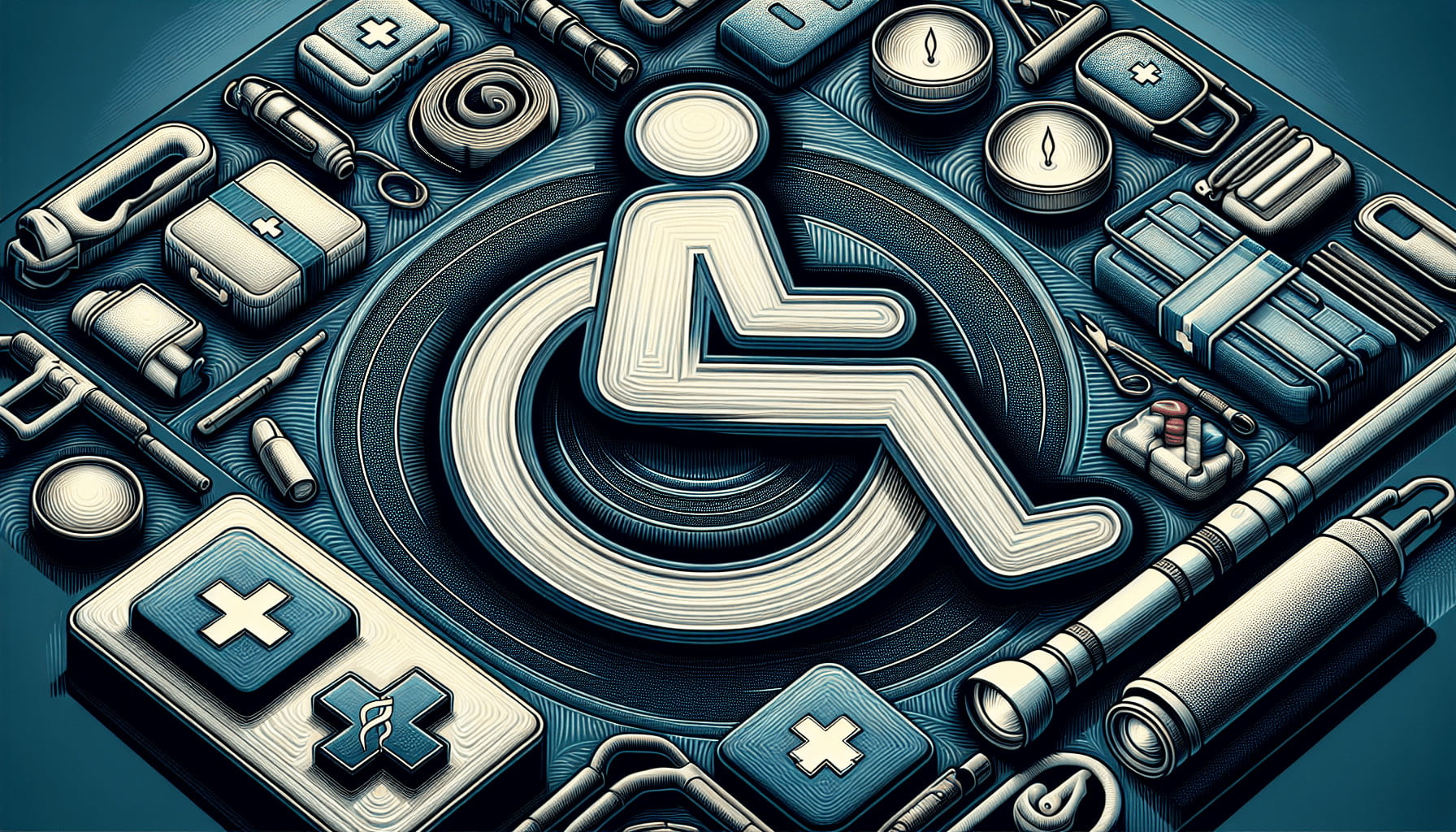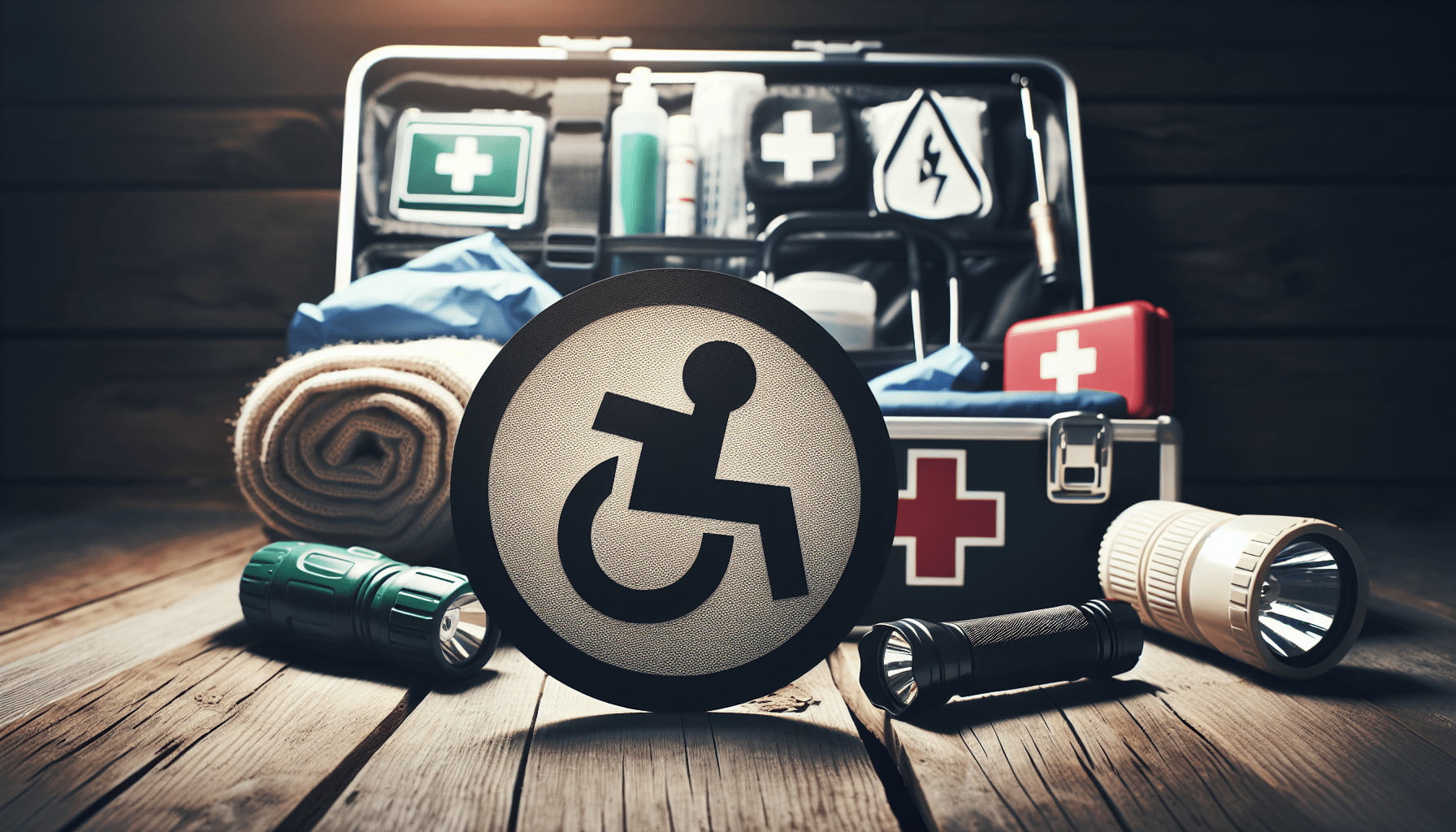Have you ever wondered how well-prepared you are for an emergency? Now, try imagining how much more complex that situation would be if you or someone you care about has a disability. When it comes to emergency preparedness, people with disabilities often face unique challenges that require special considerations.

Understanding Emergency Preparedness
Emergency preparedness involves planning and taking steps to ensure safety and well-being during emergencies. This could range from natural disasters like hurricanes or earthquakes to man-made incidents such as fires and terrorist attacks. The goal is to minimize risks and improve your ability to respond effectively when emergencies occur.
Why Emergency Preparedness is Crucial
Emergencies often strike without warning, disrupting daily life and posing various threats. For people with disabilities, these situations can be particularly hazardous. By having a well-thought-out plan, you increase your chances of staying safe and maintaining your independence.
Unique Challenges for People with Disabilities
People with disabilities face specific challenges during emergencies, such as mobility issues, sensory impairments, and the need for medical assistance or specialized equipment. These additional layers of complexity make it even more important to have a robust emergency plan in place.
Assessing Your Needs and Risks
Before you can create an effective emergency plan, you must first understand your unique needs and potential risks.
Identifying Your Specific Needs
Consider the following questions to identify your specific needs:
- What type of disability do you have?
- Do you require mobility aids?
- Do you rely on medical equipment or medication?
- Do you have sensory impairments?
- Are there specific communication methods you prefer?
Assessing Potential Risks
It’s also crucial to understand the types of emergencies that are most likely to impact you. Are you living in an area prone to natural disasters like earthquakes or floods? Knowing the potential risks can help you better prepare.
| Disability Type | Specific Needs | Potential Risks |
|---|---|---|
| Mobility Impairment | Wheelchair, walker | Difficulty evacuating, inaccessible routes |
| Visual Impairment | Guide dog, Braille materials | Obstacle navigation, emergency communication |
| Hearing Impairment | Hearing aids, sign language | Difficulty receiving alerts |
| Cognitive Impairment | Medication, caregiver assistance | Understanding emergency instructions |
Building Your Emergency Kit
An emergency kit is a collection of basic items you’ll need to survive for at least three days. For people with disabilities, this kit should be customized to meet specific needs.
Essential Items to Include
Your emergency kit should include the following:
- Water: At least one gallon per person per day.
- Food: Non-perishable items that are easy to prepare.
- Medications: A seven-day supply, along with copies of prescriptions.
- Medical Supplies: Spare batteries for assistive devices, wheelchair repair kit, etc.
- First Aid Kit: Standard supplies plus any special items you may need.
- Personal Items: Extra clothing, hygiene products, and comfort items.
- Communication Devices: Phone, charger, and backup power source.
Customizing Your Kit Based on Your Disability
Customizing your emergency kit is crucial for ensuring it meets your specific needs. For instance, if you rely on a motorized wheelchair, make sure to include a manual one as a backup. If you have dietary restrictions, stock up on appropriate food items.
| Item | Reason |
|---|---|
| Manual wheelchairs or walkers | In case motorized devices fail |
| Hearing aids and spare batteries | Essential for communication |
| Braille or large print materials | Easier navigation and information access |
| Specialized medication | To manage health conditions effectively |
Creating an Emergency Plan
Having a solid plan can significantly enhance your ability to manage during emergencies. Your plan should be comprehensive and consider all aspects of your daily life.
Developing a Communication Plan
Communication is vital during an emergency. Establish a list of people to contact, including family, friends, and healthcare providers. Make sure everyone knows how to reach you and understands your specific needs.
- Contact List: Create a comprehensive list of contacts.
- Preferred Communication Methods: Ensure that methods are accessible.
- Emergency Information Cards: Carry cards that state key information about your disability and medical needs.
Planning for Evacuation
Evacuation can be particularly challenging for people with disabilities. Consider the following steps:
- Identify Accessible Routes: Know which exits are wheelchair-friendly.
- Arrange Transportation: Plan how you’ll reach safety if you can’t drive.
- Designate Meeting Points: Have primary and secondary locations.
Practicing Your Plan
Practice makes perfect. Regular drills can help you and your support network get used to the procedure. Review and update your plan at least once a year to ensure it remains effective.

Utilizing Technology
Technology can be a game-changer in emergency preparedness for people with disabilities. Leveraging the right tools can help you stay informed, communicate, and even evacuate safely.
Emergency Apps and Alerts
There are numerous emergency apps available that provide real-time updates and alerts. Apps can also assist in locating shelters and other services.
- FEMA App: Offers weather alerts, safety tips, and disaster resources.
- Red Cross Emergency App: Provides notifications, shelter locations, and first-aid information.
Assistive Technologies
People with disabilities can benefit from various assistive technologies:
- GPS Trackers: Helpful for individuals prone to wandering.
- Speech-to-Text Apps: For those with hearing impairments.
- Smart Home Devices: Can be programmed to notify you of emergencies.
| Technology | Benefit |
|---|---|
| GPS Trackers | Ensures safety for those who may wander |
| Speech-to-Text Apps | Facilitates effective communication |
| Smart Home Devices | Automates alerts and improves response time |
Building a Support Network
Nobody can tackle an emergency alone, and having a strong support network is invaluable.
Informing Friends and Family
Let friends and family know about your emergency plan and specific needs. Ensure they understand their role in helping you during a crisis.
Connecting with the Community
Community organizations, especially those focused on disability support, can be a great resource. They often provide training sessions, workshops, and even assist in creating emergency plans tailored to your needs.
Government and Local Resources
Many government agencies and local organizations provide resources specifically designed to help people with disabilities during emergencies.
Federal Resources
- FEMA: Offers resources and programs aimed at emergency preparedness for individuals with disabilities.
- Ready.gov: Provides comprehensive information on creating emergency plans.
Local Resources
Local emergency management offices are often equipped to give you the information you need about nearby shelters, evacuation routes, and other critical details specific to your area.
| Resource Type | Examples |
|---|---|
| Federal | FEMA, Ready.gov |
| Local | City or county emergency management offices |
Training and Education
Educating yourself and your support network can go a long way in making sure everyone knows exactly what to do.
First Aid and CPR Training
Having basic skills in first aid and CPR can be amazingly helpful. Many organizations offer courses that are tailored to people with disabilities.
Specialized Training Programs
Look for training programs that focus on emergency preparedness for people with disabilities. These programs often cover specific techniques and strategies that are not included in general first-aid courses.
Tips for Specific Disabilities
Different disabilities require different types of preparation. Below are some tips for specific conditions:
Mobility Impairments
- Ensure Accessibility: Verify that entry and exit routes are easily accessible.
- Backup Power: Have multiple sources of backup power for electric mobility aids.
Sensory Impairments
- Visual Impairments: Keep essential items in the same place and label them in Braille or large print.
- Hearing Impairments: Make sure you have visual alarm systems and consider a vibrating emergency alert device.
Cognitive Impairments
- Clear Instructions: Make sure guidelines are straightforward and easy to understand.
- Caregiver Instructions: Ensure caregivers know your specific needs and emergency plan.
Psychological Preparedness
While physical preparedness is often emphasized, psychological preparedness is equally crucial. Managing stress and anxiety can make a big difference during an emergency.
Stress Management Techniques
Coping strategies such as deep breathing exercises, mindfulness, and simple physical activities can be helpful. Consult with healthcare providers for personalized advice.
Counseling and Support
Sometimes professional help can make all the difference. Don’t hesitate to seek counseling or other forms of emotional support to prepare psychologically for emergencies.
After the Emergency
What happens after the initial emergency can be just as crucial. Recovery often involves several steps aimed at restoring normalcy.
Assessing Damages
Evaluate any damages to your property and assistive devices. Quick assessments can help in filing insurance claims and getting the necessary repairs.
Accessing Resources
Many organizations provide post-emergency support. Reach out to local, state, and federal agencies to understand what resources are available to you.
Emotional Recovery
Don’t neglect your emotional well-being during recovery. Participating in support groups and continuing with any counseling can be incredibly beneficial.
Conclusion
Preparing for emergencies is a critical task for everyone, but it’s especially vital for people with disabilities. By understanding your specific needs and potential risks, building a customized emergency kit, creating a strong plan, leveraging technology, and developing a support network, you are taking significant steps toward ensuring your safety and well-being.
Emergency preparedness doesn’t end with just having a plan. Regularly review, update, and practice your plan, and stay informed about any new resources or technologies that could assist you. The effort you put in today could make all the difference when an emergency inevitably arises.
